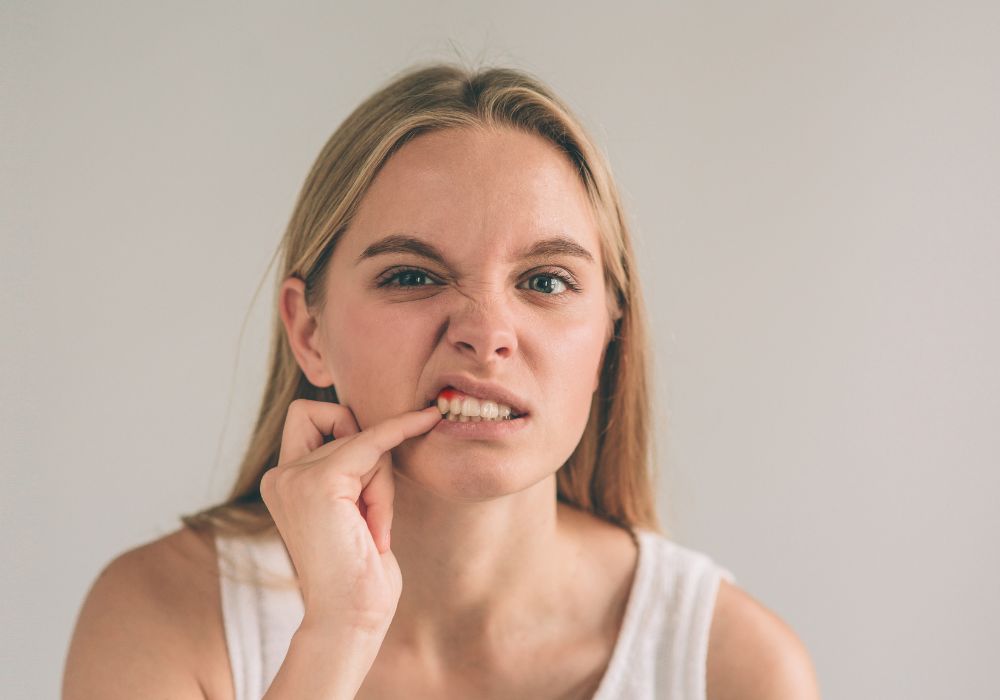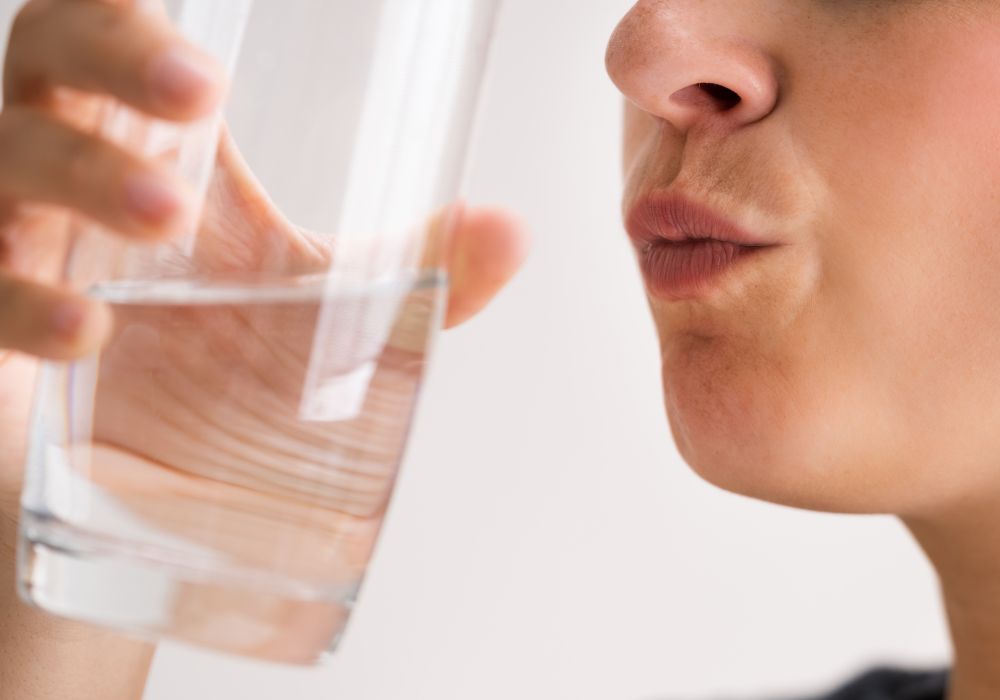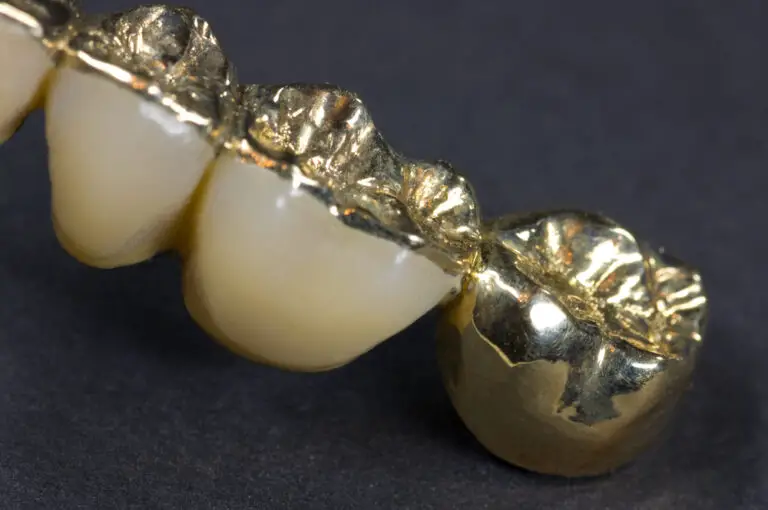For many people, coming into the dentist’s office to get a cleaning leaves them feeling satisfied and refreshed. But for others, they’ll walk out of the office with gums that feel like they’re on fire.
Gum pain is normal after getting a thorough cleaning session with your dentist—specifically if you haven’t come in for a cleaning in a long time. No, your dentist wasn’t too harsh or rough on your gums. It’s because there’s so much build-up of plaque on your teeth.
While it’s difficult to prevent the pain in your gums after getting a teeth cleaning, there are fortunately ways to soothe your gums afterward.
Today, we’ll discuss some clever strategies on how to relieve gum pain after a dental cleaning. We’ll also touch on what makes your gums feel so swollen and inflamed after cleaning in the first place. Ready to learn more? Keep scrolling to get the answers to your questions!
Why Do My Gums Hurt After Getting a Routine Cleaning?

If you feel your gums get a little sore as your dentist is cleaning them, it’s natural to worry. But don’t panic—this is pretty normal if you haven’t gotten a cleaning in a year or so. That’s because it takes a lot of effort to get rid of all the plaque and tartar that has built up over the months.
Plaque buildup is caused by food particles from sugars and carbohydrates that cling to your tooth’s enamel. And if you haven’t come in for a cleaning in a while, all that plaque and tartar in your teeth may have hardened in your gum line.
So, to ensure your mouth is rid of any bacteria and buildup, the dentist will use tools to scrape out all of the plaque in your gums. Sometimes, this will expose more of your teeth and make you feel like your gums have receded. In truth, your dentist just got rid of stubborn gunk between them.
As your dental hygienist works to get rid of the gunk in every crevice of your gums, you may experience a bit of discomfort and even bleeding.
See how satisfying it is when plaque and tartar are finally removed from your teeth and deep in your gums after months or years of build-up by watching this short video of a professional dental cleaning:
But don’t worry, the pain is temporary. If you have a high pain tolerance, you’ll only flinch for a second and feel okay in the next. Some patients, on the other hand, experience soreness and inflammation in their gums for a few days, but it’s always mild.
If you’re experiencing severe, unmanageable pain in your gums after a cleaning, talk to your dentist. It might be a sign of gingivitis, also known as gum disease. But if your dentist clears you of this, you can rest assured that your gums are simply sore from the tedious, thorough cleaning.
6 Ways to Relieve Gum Pain After a Cleaning

Are you currently experiencing gum pain or discomfort after your trip to the dentist’s office? Don’t worry, we’ve got you. Here are six ways to relieve your gums of swelling and pain:
1. Take an over-the-counter pain reliever to manage discomfort
The easiest, most convenient way to get rid of gum pain fast is by taking pain medicine. You can take any pain reliever you’re comfortable with, whether it’s acetaminophen, ibuprofen, or popular medicine brands like Advil or Tylenol. Pain relievers like these work in less than an hour.
2. Avoid eating spicy or hard foods for a while
Hard foods like toasted bread and crunchy chips might irritate your gums even more as you bite into them. Meanwhile, spicy foods can aggravate the inflammation in the area, causing more discomfort. Acidic food and drinks can have this effect sometimes as well.
So, it might be in your best interest to avoid these foods in the days following your deep cleaning session. Instead, eat soft foods such as soft-cooked meats, scrambled eggs, homemade soups, and mashed potatoes. They won’t bother your gums at all, allowing them to heal faster and better.
3. Elevate your oral care routine
While your gums are still tender and sore, switch to toothpastes designed for sensitive teeth. These toothpastes are milder, which is good for both your teeth and gums. Try looking for toothpaste with potassium nitrite, as this can soothe your irritated gums.
Even though it might hurt a little, make sure to thoroughly brush your teeth and floss between them daily. The floss may hit your gums, but it’s a must so that you can be sure that there’s no food buildup in your gums again.
4. Rinse your mouth with warm saltwater

Gargling warm salt water is one of the best home remedies for treating irritated and painful gums. Salt is known to reduce inflammation, alleviating a lot of the soreness you feel. Salt is also an antiseptic that kills the bacteria from new buildup in your teeth and gums.
To do a salt water rinse, scoop half a teaspoon of salt into a glass of warm water and let it dissolve. Then, gargle it for at least 30 seconds in your mouth, making sure the solution hits the gums that feel most inflamed. Then, spit the water out.
5. Go to the dentist more often for cleanings
To ensure that your gums feel better and less sore during cleanings moving forward, make sure to schedule regular sessions with your dentist.
The more often you get your teeth and gums cleaned, the less likely they’ll need to dig tartar buildup up from your gums. So, you won’t have to suffer from sore gums.
It’s recommended to come in for a cleaning at least once every six months. However, if you feel like there’s a lot of buildup between your teeth and gums, you can always schedule one as needed.
6. Treat yourself to some ice cream
A quick, delicious way to alleviate the pain in your gums instantly is by eating some ice cream. The super cold temperature of the ice cream numbs your gums, temporarily soothing that painful swelling in the area. Plus, the texture is soft, making it even more comfortable to eat.
But don’t eat it regularly! You should always eat ice cream and other sugary foods in moderation only. After all, it’s sugar and carbs stuck in your mouth that leads to plaque and tartar buildup.
How Long Will My Gums Stay Painful?

You might be wondering how long you’ll have to nurse your sore gums. Here’s the good news—the pain will usually go away in a few days. At most, you’re looking at 5-7 days until your gums feel completely fine again.
How long the pain and tenderness lasts depends on what kind of cleaning you had to undergo. If you had regular cleaning, the pain is usually mild and will get better in one or two days.
But if your dentist had to do a deep cleaning session, like teeth scaling and root planing, you might have to recover for a longer time.
This type of aggressive cleaning exposes the root of the gums as your dentist works to get the plaque out. So, the area will be way more sensitive than if you only got a routine cleaning. Expect your gums to feel better in about a week or so.
The Power of Consistently Good Oral Hygiene
If you want to be the kind of person who never has to worry about gum pain when getting cleanings, you need to stay consistent with your oral hygiene routine.
The cleaner your mouth and the less tartar buildup you have between your gums, the more comfortable you’ll feel every time you get dental work done.
Here are just a few things you can do to ensure your teeth and gums are extra clean and plaque-free:
- Brush your teeth three times a day. Make sure to get the hard-to-reach places of your mouth too, like the teeth at the back.
- Floss thoroughly to get rid of food particles that can harden into stubborn plaque.
- Gargle some mouthwash no more than twice a day. Use the kind of mouthwash that is designed for both teeth and gum care.
Conclusion
When there’s a lot of buildup of tartar and plaque on your teeth, it can be tedious to get all that gunk out. And when dental hygienists dig into your gum line to get all that debris out, it could lead to some mild gum pain after your session.
Thankfully, there are plenty of ways to relieve that pain and make you feel more comfortable as your gums heal. Whether you turn to over-the-counter medicine, a warm saltwater gargle, or a scoop of your favorite ice cream, you’re never too far from soothing your inflamed, irritated gums.
But remember—the best way to keep gum pain at bay when getting cleaning procedures done at the dentist is to maintain good oral hygiene. Brush your teeth, floss daily, and come in for regular cleanings at the dentist to see an improvement in how your gums react to cleanings.






